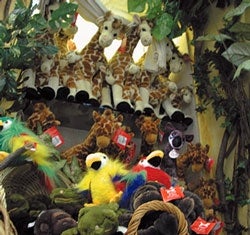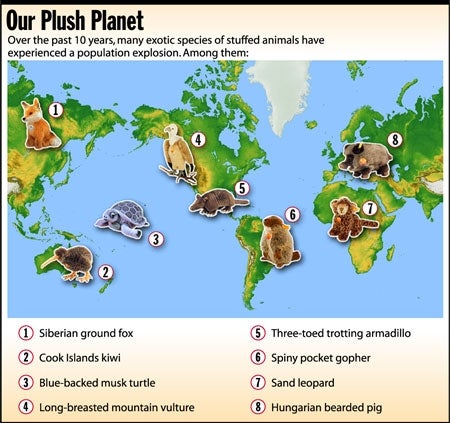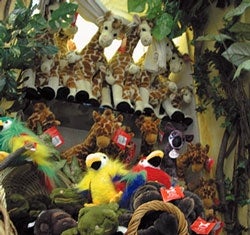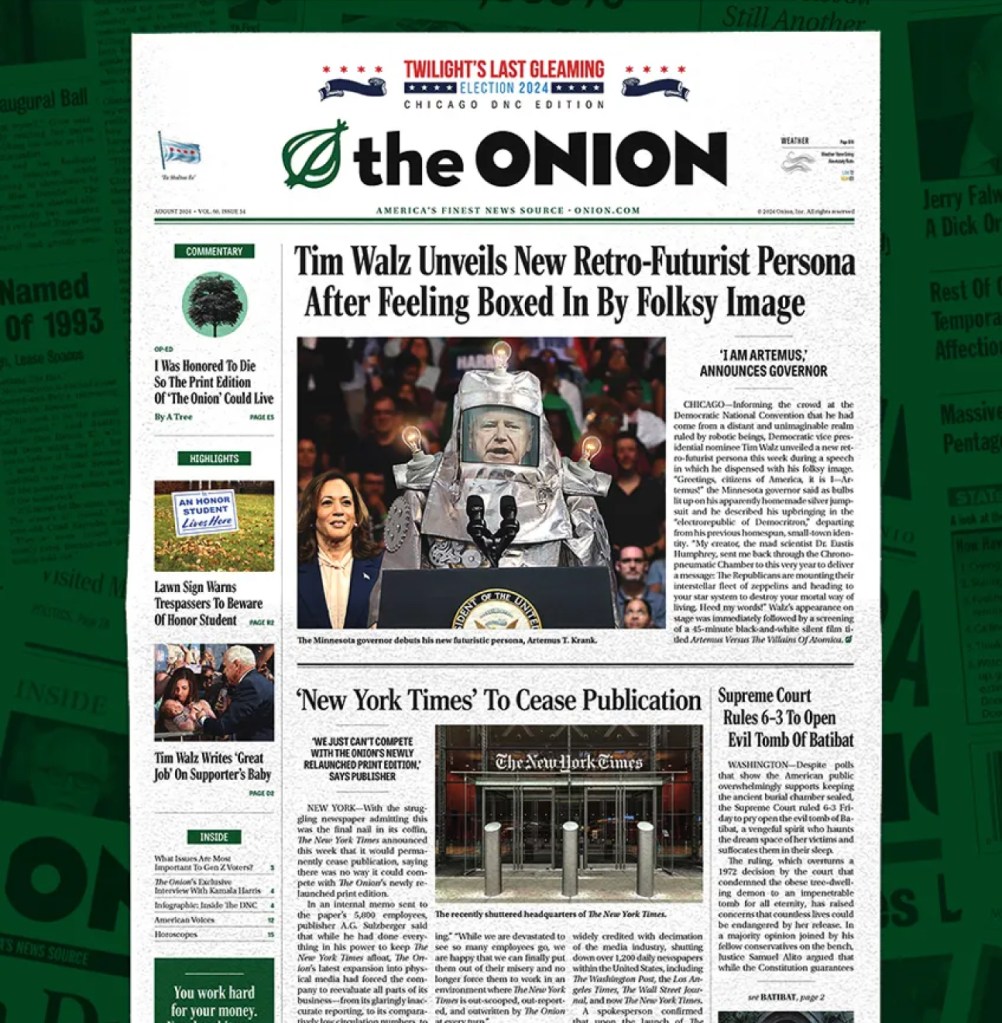WASHINGTON, DC–According to a World Wildlife Fund study released Monday, stuffed-animal biodiversity is rapidly rising, with the number of species available in plush form up nearly 800 percent since 1990.

“While the number of living species continues to plummet, the exact opposite is true of their toy counterparts,” WWF director Ruth Aberg said. “This is particularly true in America, where polyester-fiber-filled replicas of even the most endangered species can be found in glorious abundance.”
According to the WWF report, 885 animal species are in danger of extinction worldwide, and another 165 are classified as threatened. Of these 1,050 at-risk species, however, an estimated 970 can be found in mass quantities in children’s toy boxes and on collectors’ shelves.
Stuffed-animal biodiversity, Aberg said, has not always been so robust. Ten years ago, the number of species produced by toy manufacturers was “abysmally low,” mainly restricted to North American wildlife and a few select jungle animals. The past decade, however, has seen a proliferation of all manner of synthetic fauna.
“There are an estimated 41,000 species of vertebrates on Earth, yet until recently, only a small handful were available for purchase–tigers, bears, lions, penguins, giraffes, and perhaps an owl or a duck,” Aberg said. “Even then, only the most common species within a particular genus was represented. In the case of bears, for example, you’d have the brown bear, but rarely the polar bear and never the sun bear or sloth bear.”
Today, by contrast, consumers regularly encounter river otters, hedgehogs, hammerhead sharks, warthogs, capybaras, opossums, tarantulas, and rare caimans found only in remote regions of the Amazon.
“Look at sea turtles, a species rapidly disappearing due to pollution and poaching,” Aberg said. “Several years ago, EcoToys Inc. introduced Sam The Super Sea Turtle, a green turtle, or Chelonia mydas, complete with a tag describing its natural habitat and status as an endangered species. It was so well-received that the company then introduced Louie The Loggerhead, a large-headed, brownish-red turtle better known as Caretta caretta. That, in turn, was followed up with Lepidochelys kempi, a small, gray Atlantic ridley named Bo Ridley. Store shelves that were once devoid of sea turtles are now teeming with all manner of them.”

The rise in stuffed-animal biodiversity, experts say, has been made possible by humans’ growing interest in environmental issues: Science-themed toy stores have popped up in malls across the nation. Entire shelves of such retail giants as Toys ’R’ Us are devoted to animals from around the world. Beanie Baby manufacturer Ty can barely keep up with consumer demand for plush biodiversity.
Wild Republic, a major manufacturer of stuffed animals, produces more than 100 species of animals, including Halima The Snow Leopard, Brunei The Probiscus Monkey, and Adoncia The Poison Dart Frog. Several of the company’s more popular species are also available as backpacks.
“As rainforests continue to disappear at a rate of one and a half acres every second, I thought there was no hope for the leopard frog,” Sierra Club associate director Dianne Wilmot said. “But Wild Republic just announced there will 5,000 more Rana pipiens in existence by Christmas. A walk through the aisles of any toy store reveals what a diverse world we used to live in.”
While Wilmot is encouraged by the stuffed-animal boom, some see cause for alarm.
“The number of species is rising way too quickly,” said South Bend, IN, wildlife enthusiast Wendy Elias. “I wanted to get all the animals in the Jack Hanna collection: They’re so cute, and I knew I could give them a good home. But they keep introducing new ones faster than I can make shelf space. My husband will absolutely kill me if I bring another one home.”
Manufacturers, however, do not regard overpopulation as a threat.
“We have a plan, should the animals on store shelves become too numerous,” said Adrian Rohn, a spokesman for Wild Republic. “We will simply employ a systematic reduction of prices to encourage bargain hunters to thin the herd.”








